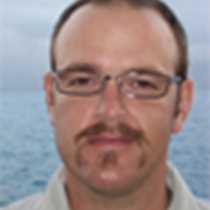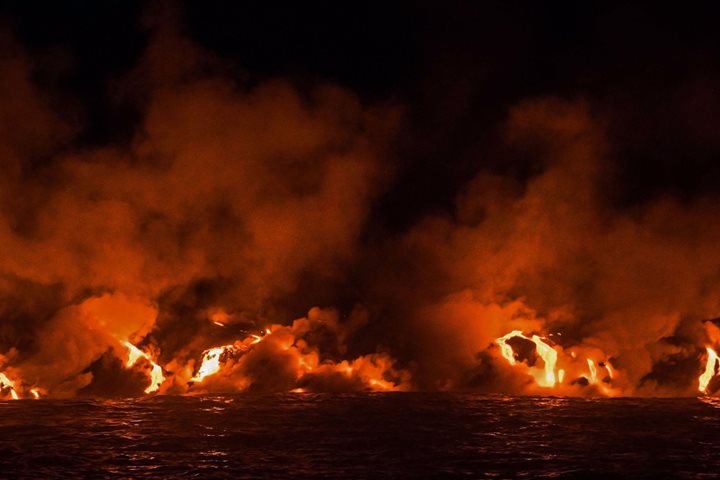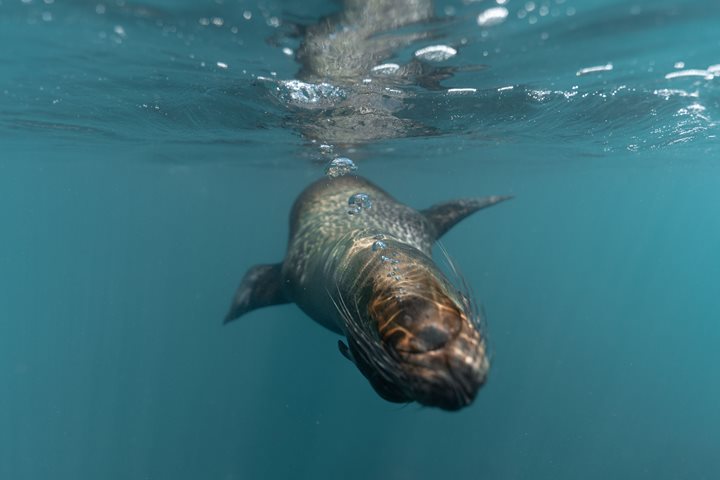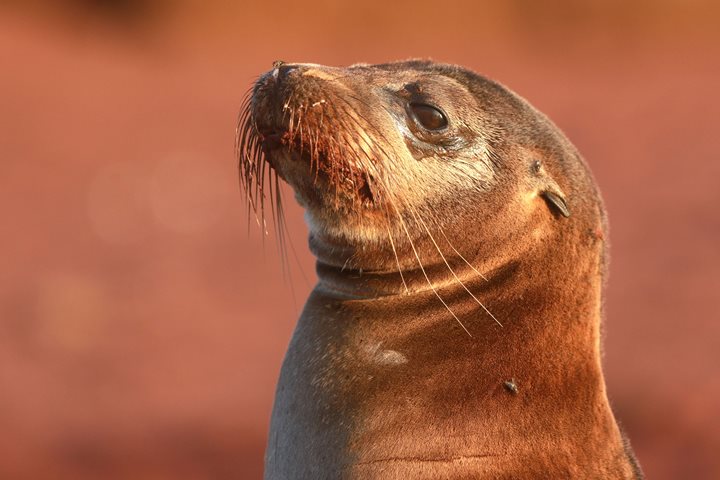Drastic contrasts await us as we head to the western part of the Galapagos archipelago and the youngest islands. Early morning finds us navigating in the northern hemisphere along the coast of Isabela Island. A heavy mist, locally referred to as Garua, blankets an extremely calm sea as we cross the equator into the southern hemisphere. Anchoring close to Isabela we find ourselves at the base of Ecuador volcano which is a huge shield volcano that lost over half of its mass into the ocean tens of thousands of years ago.
Punta Vicente Roca is our destination which is a tuff volcanic cone that is fused with what is left of Ecuador volcano.
A Zodiac ride brings us extremely close to the lava dykes, which are vertical lines of basalt that filled in cracks that had opened up during the settling of the volcanos flanks. A single Galapagos penguin warms itself in the equatorial sun and allows us a close view of this endemic species which only numbers in the thousands here in Galapagos. A flightless Cormorant swims by, then suddenly dives to find its sustenance. A heavy oceanic swell with large waves churns up the water and the nutrients that are common along the western part of the archipelago due to the Cromwell upwelling current. Our snorkel outing after our ride allows us to view a few Pacific green sea turtles that are common here in the shallow bay.
The Garua starts to lift completely as we head to Fernandina Island, which is the youngest island in Galapagos with its last eruption just over four years ago. Our afternoon visit is at Espinosa Point which is a small volcanic point that juts out from the rugged coastline. The extreme low tide exposes the remarkably bright green alga that has grown a great deal without the large Galapagos marine Iguanas keeping it in check. Marine iguanas have had a large die off over the last year as an abnormal “double” El Niño phenomenon caused primary productivity in the ocean to drop. Returning to our normal cool season there is a mass recuperation of this population. Western racer snakes are on the prowl as they search for recently hatched marine iguanas as a Galapagos hawk watches from above. Flightless cormorants dry their mediocre wings in the sun as Sally Lightfoot crabs feed in the intertidal zone. Wildlife is in abundance and we witness the constant struggle for life in this region which distinctly manifests the meaning of evolution.







